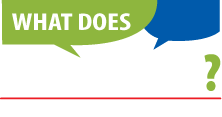Community Answers
Leave a Comment Cancel reply
This site uses Akismet to reduce spam. Learn how your comment data is processed.
Recent Posts
Recent Comments
- Ottawan on What does "~" mean?
- andy :D on What does :), :P, =D, :O, ;), :V, ./, :'(, <3, o.O, B|, 3:) mean?
- Caiden on What does ;-; mean?
- Word Smith on What does "mex" mean,as two seconds mex"
- Bill on What does you’re barmy mean?
Categories
Tags
;_;
Buzzword
Catch Phrase
confused
De Crevecoeur
does
emoticon
emoticons
emotion
expression
expressions
Face
FACEBOOK
faces
Franklin
Freneau
hashtag
help
Idiom
Jefferson
love
me
mean
meaning
None
Paine
please
quote
Quotes
sayings
Slang
symbol
symbols
talk
term
text
texting
Text symbols
tongue
Twitter
what
what does // mean
what does this mean
word
☪




This is the symbol for a closing bracket. Brackets are tall punctuation marks used in matched pairs within text, to set apart or interject other text. Used unqualified, brackets refer to different types of brackets in different parts of the world and in different contexts.
“()” are parentheses, round brackets, soft brackets, or circle brackets. Usually, two brackets must be used if putting something in parentheses. Using only one bracket at the end would mean that the opening bracket was missing or someone forgot to insert it.
Parentheses (also called simply brackets, or round brackets, curved brackets, oval brackets, or, colloquially, parens) contain material that could be omitted without destroying or altering the meaning of a sentence (in most writing, overuse of parentheses is usually a sign of a badly structured text)[according to whom?]. A milder effect may be obtained by using a pair of commas as the delimiter, though if the sentence contains commas for other purposes, visual confusion may result.
Parentheses may be used in formal writing to add supplementary information, such as “Sen. John McCain (R., Arizona) spoke at length.” They can also indicate shorthand for “either singular or plural” for nouns – e.g., “the claim(s)” – or for “either masculine or feminine” in some languages with grammatical gender.
Parenthetical phrases have been used extensively in informal writing and stream of consciousness literature. Examples include the southern American author William Faulkner (see Absalom, Absalom! and the Quentin section of The Sound and the Fury) as well as poet E. E. Cummings. Parentheses have historically been used where the dash is currently used—that is, in order to depict alternatives, such as “parenthesis)(parentheses”. Examples of this usage can be seen in editions of Fowler’s.
Parentheses may be nested (generally with one set (such as this) inside another set). This is not commonly used in formal writing (though sometimes other brackets [especially square brackets] will be used for one or more inner set of parentheses [in other words, secondary {or even tertiary} phrases can be found within the main parenthetical sentence]).
Any punctuation inside parentheses or other brackets is independent of the rest of the text: “Mrs. Pennyfarthing (What? Yes, that was her name!) was my landlady.” In this usage, the explanatory text in the parentheses is a parenthesis. (Parenthesized text is usually short and within a single sentence. Where several sentences of supplemental material are used in parentheses the final full stop would be within the parentheses. Again, the parenthesis implies that the meaning and flow of the text is supplemental to the rest of the text and the whole would be unchanged were the parenthesized sentences removed.)
Parentheses are included in the syntaxes of many computer programming languages. Typically needed to denote an argument; to tell the compiler what data type the Method/Function needs to look for first in order to initialise.
Was this answer helpful?
LikeDislike